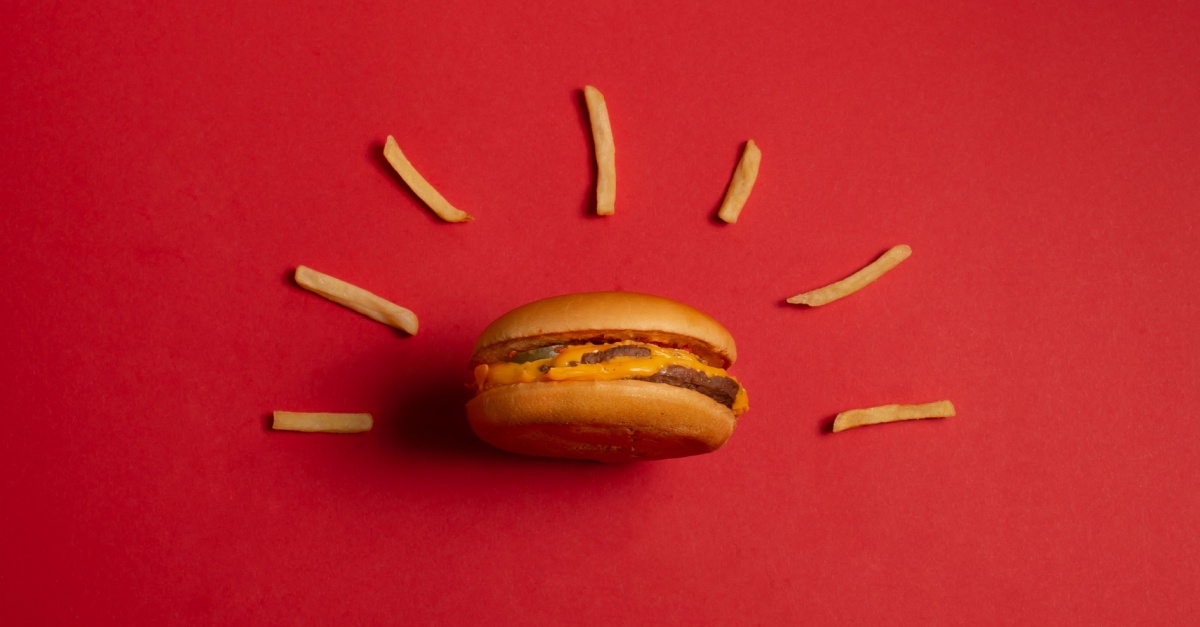Wochenrückblick: Trucker versuchen, sich gegen Diebe zu verteidigen, Steph Curry investiert in Lebensmittel-KI

October 2, 2025
October 24, 2025
x min. Lesedauer

Donnerstagabende auf Mexikos Autobahnen sind vorhersehbar geworden. Die Zahl der Frachtdiebstähle stieg im August um 6,1%. Doch während Trucker durch gefälschte Checkpoints und Stachelstreifen steuern, jagt die restliche Logistik der Legitimität hinterher Temperaturkontrolle und Technik. FedEx startet Pharmaflüge von Dublin nach Indianapolis, um die Lieferzeiten um einen Tag zu verkürzen, der Flughafen Wien baut einen 1.600 Quadratmeter großen Kühlschrank, der mit Solarenergie betrieben wird, und Steph Curry unterstützt ein KI-Startup bei der Modernisierung der Lebensmittelverteilung. Sogar McDonald's schloss sich der Kultivierungsparade an und gab 200 Millionen Dollar aus, um Viehzüchter davon zu überzeugen, dass regeneratives Beweiden bessere Burger macht. Lass uns eintauchen!
Mexikos Autobahnen verwandeln sich in Kriminalitätsrausch: Frachtdiebstahl steigt im August um 6,1%
Berichten zufolge verschwanden 247 Sattelzugmaschinen von den Autobahnen des Bundesstaates Mexiko in August allein. Im ganzen Land Ladungsdiebstahl stieg um 6,1%. Aber während Bürokraten und Sicherheitsfirmen über Statistiken streiten, wissen Trucker bereits, worauf es ankommt: Zwischen Donnerstagabend und Freitagmorgen sind sie leichte Beute.
Die Mitternachtseinkaufsliste wird teuer
Essen und Getränke Die Einkaufspräferenzen der Hauptkriminellen lagen bei 27%, aber Baumaterialien stiegen sprunghaft an allen Raubüberfällen auf 12% Oaxaca gewinnt den zweifelhaften Titel des am schnellsten wachsenden Diebstahlmarktes mit einem überwältigenden Anstieg von 133% (14 Fälle), während der Bundesstaat Mexiko seine Spitzenposition mit diesen 247 Vorfällen behauptet, was einem monatlichen Anstieg von 25% entspricht. Sattelschlepper sind nach wie vor das bevorzugte Fahrzeug für Diebe (41% aller Diebstähle), und sie bevorzugen das Zeitfenster von Mitternacht bis 6:00 Uhr morgens (31% der Vorfälle), wenn Autobahnen zu kriminellen Förderbändern werden. Der Mexico-Puebla Highway 150D und Arco Norte sind besonders berüchtigt geworden.
Was passiert, wenn 75% der Menschen Verkehrspolizisten für Gauner halten?
Hier wird es scharf: Laut der Umfrage von INEGI glauben 75% der Mexikaner, dass ihre Verkehrspolizei korrupt ist, im Bundesstaat Mexiko sind es sogar 82%. Der städtischen und der staatlichen Polizei geht es mit 65% bzw. 64% nicht viel besser. Bei einem so niedrigen Vertrauensniveau sehen sich Trucker mit einer Realität konfrontiert, in der falsche Kontrollpunkte in Puebla den Fahrern alles vorenthalten und Kriminelle aus Guanajuato auf nächtlichen Autobahnen Stachelstreifen aufstellen, als wären sie Willkommensmatten. Nicht ideal.
FedEx schreibt eine schnellere Route für temperaturempfindliche Fracht vor
FedEx hat der Welt der Gesundheitsschifffahrt gerade einen Adrenalinschub gegeben. Der Träger wird starten Flüge zwischen Dublin und Indianapolis um die Lieferzeiten zu verkürzen für Pharmazeutische Lieferungen und andere hochwertige Fracht. Chief Customer Officer Brie Carere veröffentlichte die Nachricht während einer Telefonkonferenz zu den Ergebnissen am 18. September und versprach, dass die Waren einen Tag schneller ankommen werden als die aktuellen Optionen.
Der 9-Milliarden-Dollar-Gesundheitscheck, der sich auszahlt
Das Gesundheitsgeschäft von FedEx erzielte in diesem Geschäftsjahr einen Umsatz von 9 Milliarden US-Dollar, wobei Pharmalieferungen fast die Hälfte des US-Luftexportwachstums ausmachten. Diese Dynamik erforderte eine solide Infrastruktur: Das Unternehmen schloss Qualitätsvereinbarungen im Wert von 500 Millionen US-Dollar ab und erhielt Temperaturkontrollzertifizierungen für Drehkreuze von Indianapolis bis Memphis sowie Einrichtungen in sieben Bundesstaaten. Als Carere ihrem Gesundheitsteam bei der Telefonkonferenz zu den Einnahmen einen Betrag gutschrieb, hatte sie die Zahlen, die belegen, dass sie es verdient hatten.
Jeder will ein Stück vom pharmazeutischen Kuchen
Allerdings sieht sich FedEx einem harten Wettbewerb um Gesundheitsgelder und dem Druck ausgesetzt, schnell zu expandieren. DHL bietet bereits temperaturkontrollierte Flüge von Indianapolis aus an und zählt Siemens und Eli Lilly zu seinen Kunden. UPS will außerdem seinen Umsatz im Gesundheitswesen bis 2026 verdoppeln. Die Strecke Dublin-Indianapolis ist zwar der jüngste Schritt von FedEx im Rahmen seiner Luftfrachtprogramme Network 2.0, DRIVE und Tricolor, Logistik im Gesundheitswesen hat sich zur angesagtesten Branche der Schifffahrtsbranche entwickelt.
Wien spielt Pharma Cool
FedEx ist nicht der Einzige, der den 42-Milliarden-Dollar-Pharmafrachtmarkt verfolgt. Flughafen Wien 2024 wurden 4.238 Tonnen Pharmazeutika ausgeliefert — ein Plus von 15% gegenüber dem Vorjahr und jetzt 15% der gesamten Ladung. Aber was unterscheidet Wien von anderen Flughäfen, die ein Stück vom Kuchen abhaben wollen? Andere Drehkreuze jagen dem Volumen nach; Wien konzentriert sich auf Steuerung der Temperatur.
Die Goldlöckchen-Zone bekommt Immobilien
Wien errichtete direkt auf dem Vorfeld ein 1.600 Quadratmeter großes Pharma Handling Center, das rund um die Uhr in zwei Temperaturzonen (+2 bis +8 °C und +15 bis +25 °C) betrieben wird. Michael Zach, Senior Vice President of Ground Handling and Cargo Operations, wacht über versiegelte Kühlschleusen, die die Ladung bei LKW-Transfers schützen, über Kühlauflieger, die über die Rampe pendeln, und über stromgesteuerte Rollbettsysteme, die Sendungen durch Hochgeschwindigkeitstüren von der Landseite zur Luftseite transportieren. All diese Technik hält Gentherapien und Biologika bei perfekten Temperaturen, während der Standort Wien Westeuropa mit asiatischen API-Lieferanten verbindet und die Lieferzeiten in die mittel-, ost- und südeuropäischen Märkte verkürzt.
Sonnenkollektoren treffen auf Kühllager
Österreichs größte Solaranlage versorgt auch den Betrieb Wiens mit Strom und deckt 50% des Stromverbrauchs des Flughafens ab. Die Anlage verpackt Sendungen mit Thermofolie, entwickelt maßgeschneiderte Verfahren für personalisierte Medikamente und sorgt dafür, dass Fluggesellschaften und Spediteure unter einem temperaturkontrollierten Dach zusammenarbeiten. Wien weiß, dass es in Bezug auf die Größe nicht mit den Mega-Hubs mithalten kann, also wurde genau das gebaut, was Pharmazeutika benötigen.
Steph Curry schießt seinen Schuss: KI, die Garnelenbestellungen weniger fischig macht
Sie wissen, dass die Lebensmittelversorgungsketten hinter den Zeiten zurückgeblieben sind, in denen einige Händler immer noch Bestellungen per Faxgerät entgegennehmen. Joseph Jacob sah es aus erster Hand: Seine Familie exportiert seit den 1930er Jahren Garnelen aus Indien, was ihm seit vier Generationen Einblick gibt, wie veraltet das System immer noch ist. Dieses Erbe hat ihm einfach geholfen Überzeugen Sie Steph Currys Risikofonds 3,8 Millionen $ darauf zu wetten, dass KI es endlich kann Modernisierung der Lebensmittelverteilung.
Von Fabrikhallen bis zu Silicon Valley-Fußböden
Jacob verbrachte Jahre damit, Hunderte Millionen Pfund Meeresfrüchte zu kaufen, die auf Excel-Tabellen und einem 20 Jahre alten ERP-System aufgezeichnet wurden. Er wurde sogar Zeuge, wie zwei teure Software-Rollouts im Unternehmen seiner Familie scheiterten. Vier Generationen von Jacobs haben in allen Bereichen der Lieferkette für Meeresfrüchte gearbeitet, von der Landwirtschaft bis zum Import. Als er also sah, wie Händler in WhatsApp-Bestellungen, Voicemails und sogar Faxen, die manuell eingegeben werden mussten, ertranken, wusste er genau, auf welche Problembereiche es sich zu konzentrieren galt. Sein Startup Burnt zwingt Unternehmen nicht, ihre alten Systeme in den Müll zu werfen. Sein KI-Agent Ozai sitzt an der Spitze und erledigt bis zu 80% der nervenaufreibenden Dateneingabe. Das Unternehmen verarbeitet bereits monatliche Bestellungen im Wert von über 10 Millionen US-Dollar und erzielt sechsstellige Umsätze, unter anderem von einem der größten Lebensmittelkonzerne Großbritanniens.
Warum Currys Geld hier Sinn macht
Penny Jar Capital, Currys VC-Firma, sucht speziell nach Gründern, die sich mit Branchen befassen, in denen die Einführung von Technologie wiederholt gescheitert ist. Jacob schlug zahllosen Investoren vor, die die unglamouröse Natur des Lebensmittelvertriebs nicht überwinden konnten, obwohl ihnen der billionenschwere US-Lebensmittelmarkt direkt ins Gesicht starrte. Zwei Jahrzehnte gescheiterter Unternehmenssoftware-Rollouts haben dazu geführt, dass Vertriebspartner ihre ERPs als „notwendige Übel“ bezeichnen und genau die Art von übersehener Gelegenheit geschaffen haben, die Penny Jar gerne nutzt.
Big Mac Goes Green: McDonald's setzt 200 Millionen $ auf Nachhaltigkeit bei Burgern
McDonald's hat gerade 200 Millionen Dollar investiert in dem vielleicht teuersten Versuch der Welt, Kühe klimafreundlich zu züchten — und zu beweisen, dass Viertelpfünder und planetarische Gesundheit koexistieren können. Nach 70 Jahren der Dominanz von Rindfleisch will der Fast-Food-Titan in den nächsten sieben Jahren 4 Millionen Hektar amerikanischer Ranchflächen in 38 Bundesstaaten umgestalten.
Wenn Unternehmensgiganten ihren Worten Taten folgen lassen
McDonald's spielt hier keinen Small Ball. Es unterstützt Viehzüchter mit echten Ressourcen, technischer Unterstützung und dem Geld, das für die Einführung regenerativer Beweidungsmethoden erforderlich ist, die die Bodengesundheit und die Lebensräume der Wildtiere verbessern. Partner wie Cargill, Coca-Cola und Golden State Foods stehen ebenfalls hinter den Bemühungen und finanzieren Organisationen, die Viehzüchtern beibringen, wie sie ihr Land härter bearbeiten und es gleichzeitig besser behandeln können. Cesar Piña, Leiter der Lieferkette von McDonald's, weist darauf hin, dass das Unternehmen jedes Jahr 90% der Amerikaner beliefert — was es unmöglich macht, seine Verantwortung für den Schutz der Lebensmittelsysteme zu ignorieren.
Rancher gewinnen, Wildtiere gewinnen, Ihr Burger gewinnt
Jeff Trandahl von der National Fish and Wildlife Foundation bringt die schöne Einfachheit auf den Punkt: Richtig bewirtschaftete Rinder bedeuten, dass der Boden mehr Wasser fasst, besseres Gras wächst und mehr Wildtiere leben. Viehzüchter, die mitmachen, erhalten wirtschaftliche Anreize, die die Rentabilität steigern und gleichzeitig die ländlichen Gemeinden stärken. Die gesamte Lieferkette wird widerstandsfähiger und schafft eine Grundlage, auf der landwirtschaftliche Nachhaltigkeit nicht bedeutet, Produktivität zu opfern.
Die Wahrheit über Lieferketten
Mexikanische Trucker können Checkpoints nicht trauen. Lebensmittelhändler können Faxgeräten nicht trauen. Aber Steph Curry vertraut KI, Wien vertraut Temperatursensoren und McDonald's vertraut regenerativer Viehzucht. Der Unterschied zwischen Chaos und Kontrolle? Sichtbarkeit der Lieferungen in Echtzeit. Wenn der Frachtdiebstahl sprunghaft ansteigt und Ihre Konkurrenz Pharmazeutika über die Ozeane katapultiert, Tracking in Echtzeit hört auf, ein Luxus zu sein und fängt an, das ganze Spiel zu sein.
Bewaffnen Sie sich mit Innovation: lassen Sie Tve Nehmen Sie eine Vorreiterrolle bei der Transformation Ihrer Lieferkettenabläufe ein. Machen Sie sich mit der Zukunft der Logistik vertraut —fange noch heute mit Tve an.


